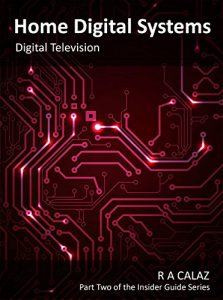This series of publications introduces the reader to the application of digital systems in the home. It is suitable for those with no prior knowledge of the subject, whilst at the same time providing a source of reference for experienced installers who wish to know more about the subject.
This part introduces the reader to the world of digital television. Analogue picture formats are first described, these being derived from a video signal. Analogue and digital picture formats are defined and the benefits of digital signals are listed. The concept of a digital data stream is then introduced with the data broken into packets containing the information to create a digital picture.
The next section outlines how analogue-to-digital conversion takes place, and how the resulting mass of data has to be compressed in order to fit into the available bandwidth. The method of carrying several programmes in one data stream is also described.
The concept of data errors is then introduced, and how then can be minimised or eliminated, and a summary of bandwidth requirements is listed.
This part introduces the reader to the world of digital television. Analogue picture formats are first described, these being derived from a video signal. Analogue and digital picture formats are defined and the benefits of digital signals are listed. The concept of a digital data stream is then introduced with the data broken into packets containing the information to create a digital picture.
The next section outlines how analogue-to-digital conversion takes place, and how the resulting mass of data has to be compressed in order to fit into the available bandwidth. The method of carrying several programmes in one data stream is also described.
The concept of data errors is then introduced, and how then can be minimised or eliminated, and a summary of bandwidth requirements is listed.






